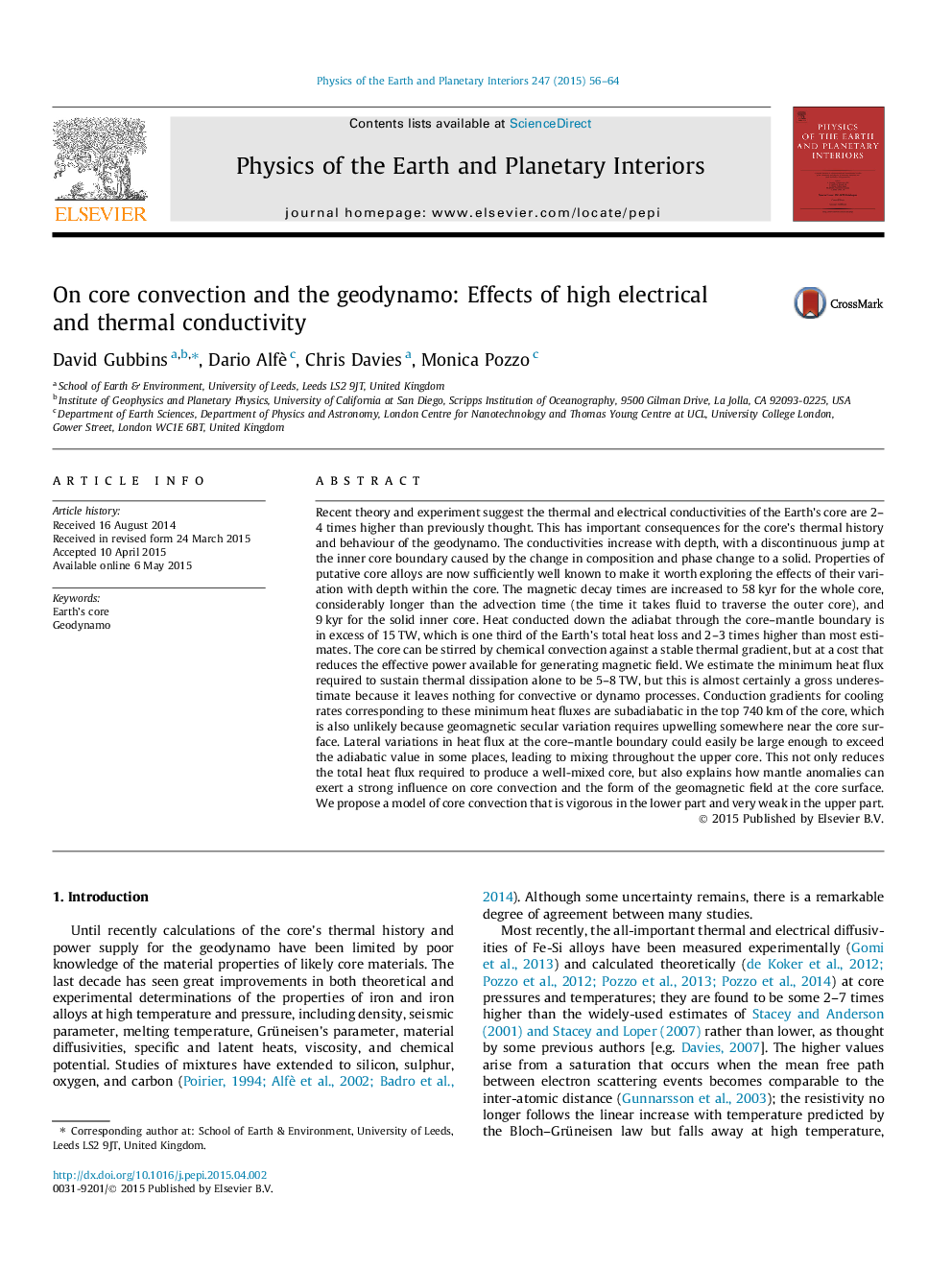| کد مقاله | کد نشریه | سال انتشار | مقاله انگلیسی | نسخه تمام متن |
|---|---|---|---|---|
| 4741395 | 1641494 | 2015 | 9 صفحه PDF | دانلود رایگان |
Recent theory and experiment suggest the thermal and electrical conductivities of the Earth’s core are 2–4 times higher than previously thought. This has important consequences for the core’s thermal history and behaviour of the geodynamo. The conductivities increase with depth, with a discontinuous jump at the inner core boundary caused by the change in composition and phase change to a solid. Properties of putative core alloys are now sufficiently well known to make it worth exploring the effects of their variation with depth within the core. The magnetic decay times are increased to 58 kyr for the whole core, considerably longer than the advection time (the time it takes fluid to traverse the outer core), and 9 kyr for the solid inner core. Heat conducted down the adiabat through the core–mantle boundary is in excess of 15 TW, which is one third of the Earth’s total heat loss and 2–3 times higher than most estimates. The core can be stirred by chemical convection against a stable thermal gradient, but at a cost that reduces the effective power available for generating magnetic field. We estimate the minimum heat flux required to sustain thermal dissipation alone to be 5–8 TW, but this is almost certainly a gross underestimate because it leaves nothing for convective or dynamo processes. Conduction gradients for cooling rates corresponding to these minimum heat fluxes are subadiabatic in the top 740 km of the core, which is also unlikely because geomagnetic secular variation requires upwelling somewhere near the core surface. Lateral variations in heat flux at the core–mantle boundary could easily be large enough to exceed the adiabatic value in some places, leading to mixing throughout the upper core. This not only reduces the total heat flux required to produce a well-mixed core, but also explains how mantle anomalies can exert a strong influence on core convection and the form of the geomagnetic field at the core surface. We propose a model of core convection that is vigorous in the lower part and very weak in the upper part.
Journal: Physics of the Earth and Planetary Interiors - Volume 247, October 2015, Pages 56–64
